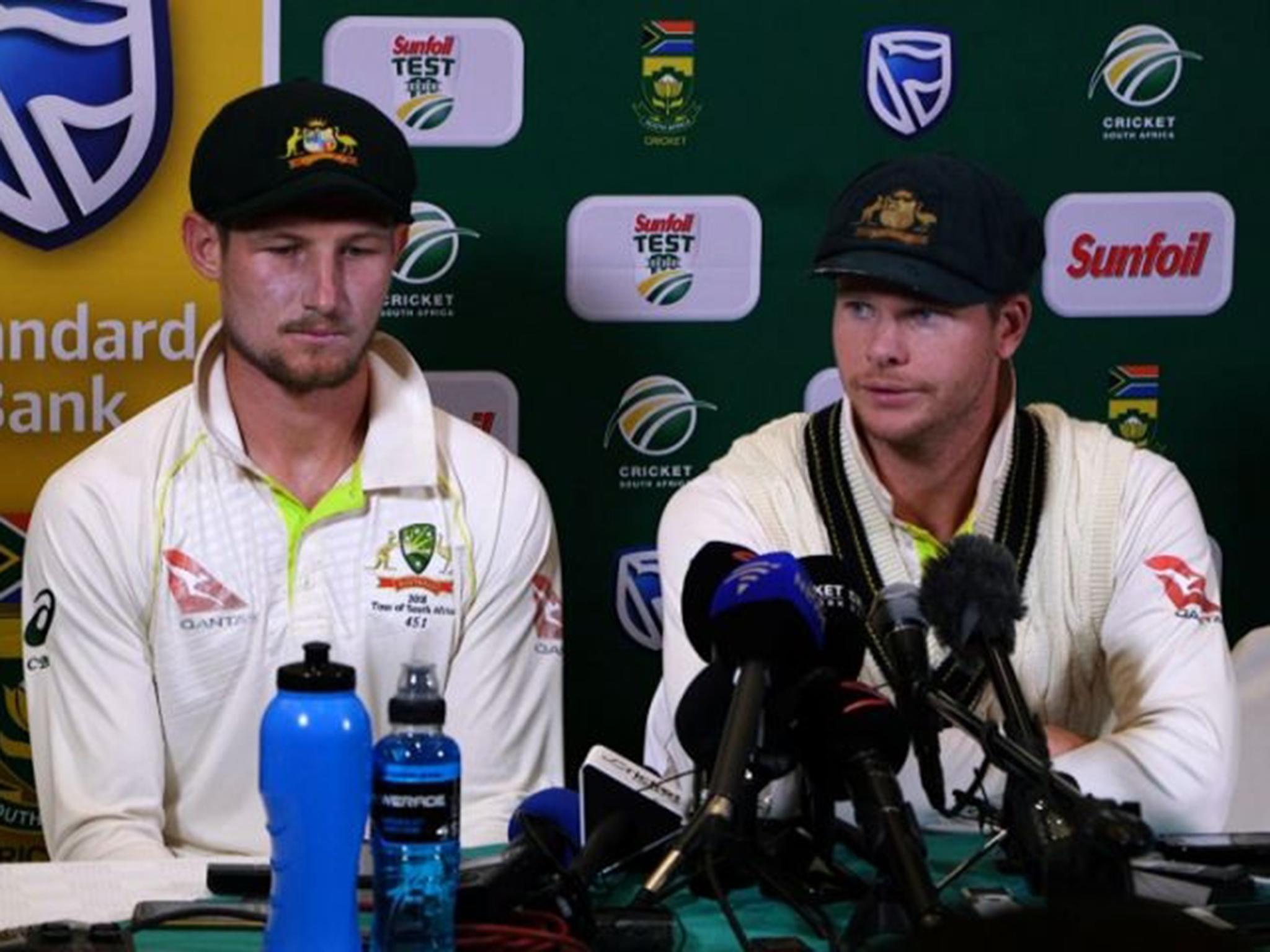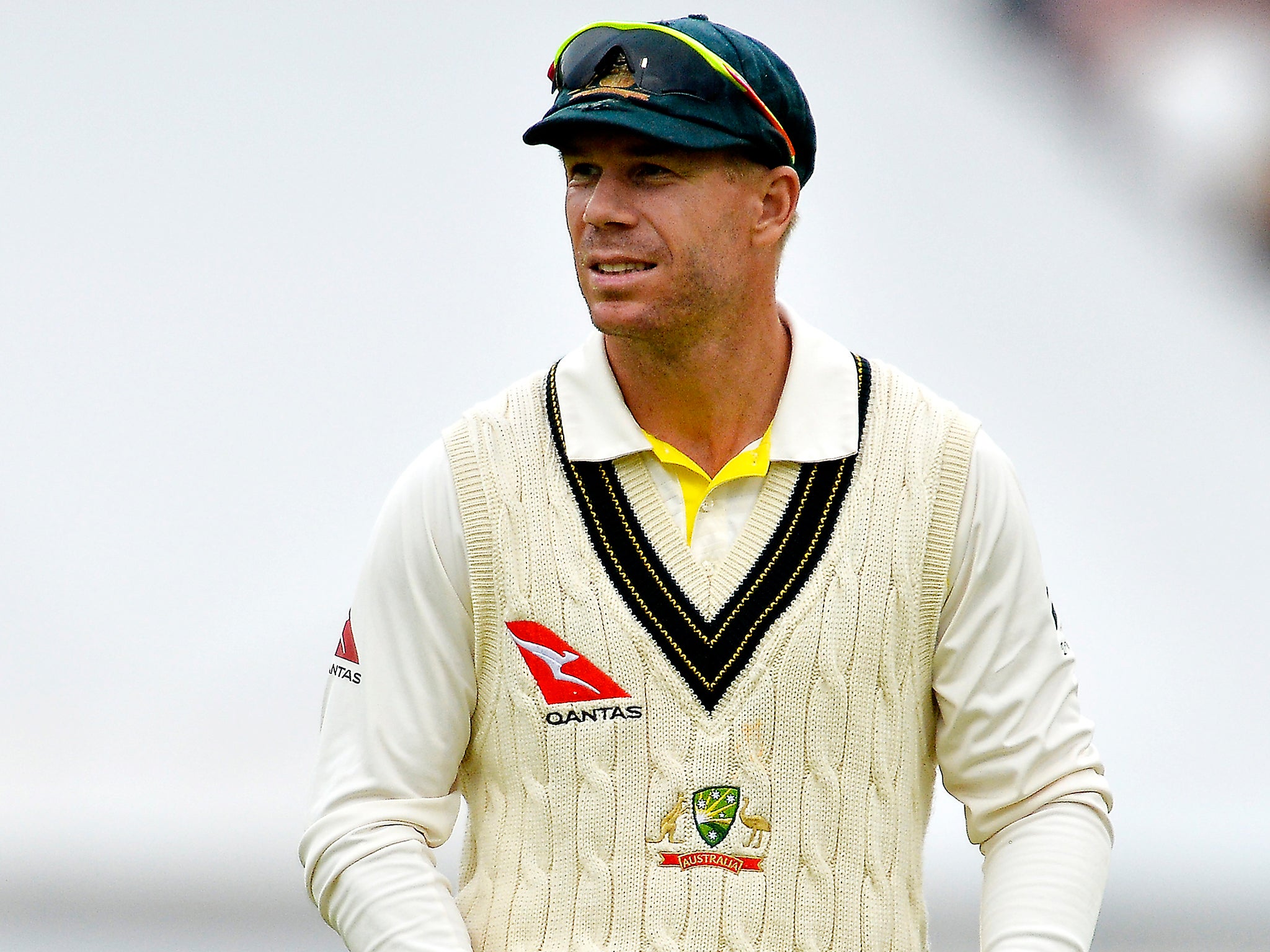Cricket Australia reveals reasons behind bans for Steve Smith, David Warner and Cameron Bancroft after cheating scandal
Former Australia captain Smith and his ex-vice-captain Warner have been banned for a year with Bancroft suspended for six months after admitting to ball-tampering

Your support helps us to tell the story
From reproductive rights to climate change to Big Tech, The Independent is on the ground when the story is developing. Whether it's investigating the financials of Elon Musk's pro-Trump PAC or producing our latest documentary, 'The A Word', which shines a light on the American women fighting for reproductive rights, we know how important it is to parse out the facts from the messaging.
At such a critical moment in US history, we need reporters on the ground. Your donation allows us to keep sending journalists to speak to both sides of the story.
The Independent is trusted by Americans across the entire political spectrum. And unlike many other quality news outlets, we choose not to lock Americans out of our reporting and analysis with paywalls. We believe quality journalism should be available to everyone, paid for by those who can afford it.
Your support makes all the difference.Cricket Australia has revealed the reasons behind the 12-month bans for former captain Steve Smith and vice-captain David Warner, as well as the nine-month suspension handed to Cameron Bancroft, following the ball-tampering scandal during the Test series with South Africa.
In what is an extensive and revealing statement, Warner appears to have been the brains behind the decision to go into the third day of the third Test with a plan to cheat by altering the surface of the ball with “sandpaper” – not sticky tape covered in dirt as Bancroft first alluded to in a press conference – which Bancroft then carried out only to be caught by television cameras.
All three were charged with conduct that was “contrary to the spirit of the game” and that brought “cricket into disrepute”, but the reasons given for Warner’s year-long ban suggest that he has been identified as the orchestrator of the incident.
In the statement, Warner is said to have “developed” the plan, “instructed” Bancroft as a junior player to carry it out and “provision advice” to him about how to alter the surface of the ball that included a demonstration. On top of that, Warner also failed to report the ball-tampering plan to the relevant match officials, and did not voluntarily admit his knowledge of it during the Cricket Australia investigation.
In contrast, Smith has been punished for having knowledge of the plan and failing to either prevent or report it as well as encouraging Bancroft to conceal the evidence by hiding the sandpaper in his trousers while the match was in play – which was also picked up by television cameras – but his rap sheet does not feature any of the planning aspects that appear next to Warner’s name.
Smith is, however, charged with “misleading public comments regarding the nature, extent and participants of the plan” after he claimed that the “leadership group” had agreed on cheating in a meeting. The claim, which was made in a press conference immediately after the day’s play had finished last Saturday, reportedly infuriated the other senior members of the squad who had nothing to do with the scandal, and Bancroft is charged with the same offence having appeared alongside his former captain in the press conference.

Here’s Cricket Australia’s reasons in full
Steve Smith, David Warner and Cameron Bancroft have been charged with a breach of Article 2.3.4 of the CA Code of Conduct, namely their conduct:
- Was contrary to the spirit of the game;
- Was unbecoming of a representative or official;
- Is or could be harmful to the interests of cricket; and/or
- Did bring the game of cricket into disrepute.
In respect of the individual players concerned, Cricket Australia advises the following:
Steve Smith was charged with a breach of Article 2.3.5 of the CA Code of Conduct based on:
- Knowledge of a potential plan to attempt to artificially alter the condition of the ball;
- Failure to take steps to seek to prevent the development and implementation of that plan;
- Directing that evidence of attempted tampering be concealed on the field of play;
- Seeking to mislead Match Officials and others regarding Bancroft’s attempts to artificially alter the condition of the ball; and
- Misleading public comments regarding the nature, extent and participants of the plan.

David Warner was charged with a breach of Article 2.3.5 of the CA Code of Conduct based on:
- Development of a plan to attempt to artificially alter the condition of the ball;
- Instruction to a junior player to carry out a plan to take steps to attempt to artificially alter the condition of the ball using sandpaper
- Provision of advice to a junior player regarding how a ball could be artificially altered including demonstrating how it could be done;
- Failure to take steps to seek to prevent the development and/or implementation of the plan;
- Failure to report his knowledge of the plan at any time prior to or during the match;
- Misleading Match Officials through the concealment of his knowledge of and involvement in the plan; and
- Failure to voluntarily report his knowledge of the plan after the match.

Cameron Bancroft was charged with a breach of Article 2.3.5 of the CA Code of Conduct based on:
- Knowledge of the existence of, and being party to, the plan to attempt to artificially alter the condition of the ball using sandpaper;
- Carrying out instructions to attempt to artificially alter the condition of the ball;
- Seeking to conceal evidence of his attempts to artificially alter the condition of the ball;
- Seeking to mislead Match Officials and others regarding his attempts to artificially alter the condition of the ball; and
- Misleading public comments regarding the nature, extent, implementation and participants of the plan.
Join our commenting forum
Join thought-provoking conversations, follow other Independent readers and see their replies
Comments